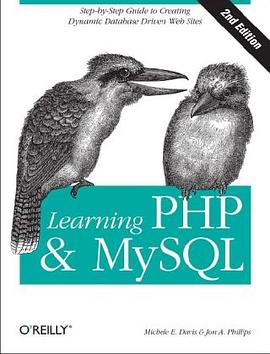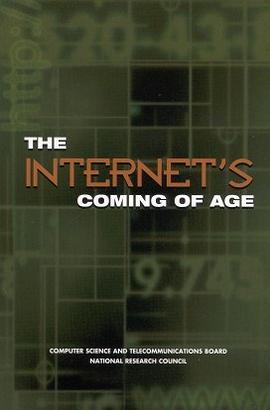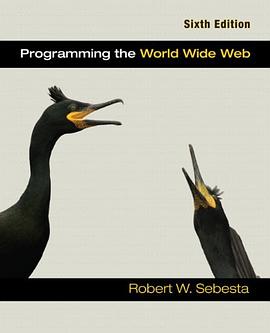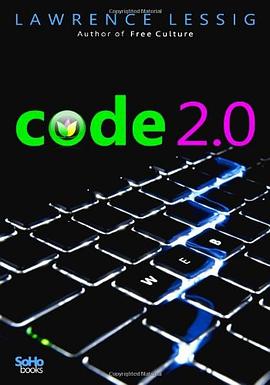Chapter Outline
Chapter 1: Introduction (PDF, 113 kB)
General introduction to the phenomenon and its significance, pointers towards some major sites. Run through some major terms which will be discussed: gatewatching, participatory journalism, open news, open publishing, open editing, multiperspectival journalism, p2p journalism, p2p publishing, many-to-many journalism, alternative media, content syndication, semantic Web, creative commons.
Gatewatching: How Does It Work?
Outlines the practice of gatewatching which underlies all journalism and publishing efforts covered here. Gatewatching complements or supplements traditional journalistic gatekeeping, which becomes impossible in an open medium such as the Internet (Web). Participants may still occasionally report and publish their own stories, but frequently publicise information becoming available elsewhere rather than publish original content. Gatewatching sites compile such reports, and usually enable all of their users to submit material as well as comment on stories. This can be described as participatory journalism. While individual user submissions may remain less than comprehensive, their combination and complementation with comments and discussion allows them to grow into an in-depth multiperspectival coverage of news events. (The idea of multiperspectival news reporting was introduced by Herbert Gans in the 1970s.)
This chapter considers gatewatching practice as an alternative to traditional gatekeeping, and charts its connections to other information gathering techniques, such as librarians' practice of collecting resources on specific topics. It describes gatewatching as a practice which grows out of commonly held assumptions about 'the nature of the Web' as an egalitarian, liberating, open-access, alternative medium which routes around obstructions (such as the content censorship that is an inevitable result of the editing processes of traditional gatekeeping), but also questions the validity of claims that gatewatching automatically produces more balanced, uncensored coverage.
Case study: Slashdot
As the most prominent gatewatching site, Slashdot makes for an appropriate case study. It centrally involves its users as gatewatchers, and its site operators have completely removed themselves from the news gathering process. While the focus of this case study will be on the gatewatching process itself, the content rating and moderation systems in Slashdot will also be covered here, prefiguring some issues to be raised in later chapters. Finally, the role of Slashdot's site operators in content selection from users' story submissions will also be considered: Slashdot does not constitute a fully open publishing system, as site owners retain the final say over what appears on the Website. This provides a useful lead-in to the next chapter.
Making News Open Source
Where gatewatching sites move beyond Slashdot's 'open submission, but editorial selection' approach to publishing, their participants become co- or indeed sole editors of the sites; their users turn into produsers. By opening up the editing process to their users, such sites can be described as a form of open publishing, or - given this study's focus on news sites - as open news. This chapter draws parallels between open news and open source software development, and describes open gatewatching sites as making news open source: much as in software development, open news is produced through a collaborative piecing together of various contributions, which creates an end product of better quality than could have been achieved by any one contributor by themselves. Also analogous are claims that open news produces more balanced and informative results than traditional, commercial news media which are seen to have hidden political or economic agendas, just as open source software is said to be more stable and user-friendly than the products of commercial software developers. Such links between open source and open news have been spelt out most explicitly by the operators of OpenFlows.org, who have termed the open source approach Open Source Intelligence (OSI) and aim to apply OSI to various non-software development projects.
The chapter will also outline the role gatewatching and open editing practices are beginning to play in sites which do not strictly cover news-related content only, such as the Wiki phenomenon of collaboratively edited encyclopaedias. Wiki sites usually enable any user to add to and edit content in the encyclopaedia (which frequently involves publicising content available off-site, thus constituting a form of gatewatching as well as open editing); they can be seen as another example of adapting open source approaches to tasks other than software development. Like open news sites, Wikis similarly enable a multiperspectival coverage of their subject area.
Case studies: Indymedia, Wiki sites
The world-wide Indymedia network of open publishing sites is a key case study to examine the issues raised in this chapter. Sydney Indymedia programmer Matthew Arnison is one of the developers of the Indymedia open editing system and has written extensively on the subject.
The Wikipedia, a multilingual free encyclopedia project, will provide a second case study. It will be investigated with a particular focus on how such sites deal with conflicting views and opinions, and whether they are able to arrive at a truly multiperspectival coverage of their topics as postulated in Gans's work. The Wikipedia also includes an 'in the news' section, providing a useful link between Wikis and more mainstream open news sites.
P2P Journalism
With its involvement of users as produsers, open news can be usefully described as peer-to-peer (or p2p) journalism. This chapter begins by examining various definitions of 'peer to peer', from a technological approach which postulates that users' computers must directly connect with one another without an intervening server (which is not applicable to Web-based p2p interaction, since interaction on the World Wide Web must by definition involve the presence of a Web server, and which would also keep celebrated p2p applications such as Napster from being classified as p2p) to a definition based on whether the social interactions which take place in p2p media are able to be conducted without a significant intrusion of censoring, editing, or otherwise determining authorities. This latter definition will be used to describe open news efforts as p2p journalism.
This chapter, therefore, returns to a concern with the role of editors and site owners in supposedly 'open' news publications. While supporting the view that p2p interaction is possible even in a medium like the World Wide Web which cannot at present do away with central servers, it provides a number of approaches to checking how 'p2p' an open news publication truly is. This also links back to the previous case studies, since Indymedia's Matthew Arnison has stressed that for him without open editing (i.e., the absence of central determining authorities) there can be no open publishing.
Case studies: Kuro5hin, MediaChannel
The genesis of Kuro5hin ('corrosion') provides useful insight into the debate around open editing which exists in gatewatcher communities themselves. Kuro5hin ostensibly emerged out of a frustration with Slashdot's non-p2p approach to 'open' news, and its users' commentary on 'that other place' indicates the desire for true p2p journalism. By comparison, MediaChannel can be seen as conducting p2p journalism behind closed doors: its network of some 1000 affiliated news organisations engages in p2p journalism amongst themselves, but the results of their efforts are presented in a relatively traditional, 'closed' news format to the site's general audience. This may indicate the intrusion of p2p journalism approaches into more traditional journalistic practice.
P2P Publishing
In addition to p2p journalism as it is conducted through gatewatcher-based open news sites, recent times have also seen the emergence of more decentralised p2p journalism efforts which may even come to satisfy the more narrow technological definition of 'peer-to-peer' as outlined in the previous chapter. As a kind of 'many-to-many journalism', news-related blogging plays a particularly significant role in this respect: rather than contribute to central open news sites, such bloggers report and comment through their own independent blogs, which often also allow readers to add their own contributions and comments. Further, sites such as Metafilter and others are beginning to provide effective ways of connecting individual blogs based on their subject areas or other factors. Eventually, then, such topical meta-blogs could develop into systems which rival centralised gatewatcher sites such as Slashdot in scope and coverage.
This chapter outlines the developments afoot in this area, and considers the implications. It also points out that some such meta-blogs may well end up simply replicating the problems identified in the discussion of Slashdot and similar 'edited' gatewatcher sites: the operators of the meta-blogs may end up essentially as editors of gatewatcher sites, the only distinction being that while users actively submit content to centralised gatewatcher sites, meta-blogs can seek out and integrate content from existing blogs with or without the bloggers' consent. The chapter will conclude by describing a continuum of sites stretching from individual blogs via meta-blogs, open news sites, and edited gatewatcher sites to 'closed' news sites. Along this continuum, sites will vary in the openness of participation for news submitters and editors, the 'p2p-ness' of their journalism, and their technostructural setup. This continuum enables the development of a taxonomy of online news sites.
Potential case studies: The Internet Topic Exchange, Metafilter, Seablogs
Case studies in this area are difficult to forecast as technological developments are occurring at a rapid pace. There are currently a number of projects which may lead to the development of fully featured meta-blogs as described above. The Internet Topic Exchange is one such example which presently provides several topical channels collating postings from a variety of blogs; Metafilter is a much larger collection of blogs, but still lacks clear topic delineations. Seablogs is an example of a smaller community of Seattle-based blogs.
Content Syndication and the Semantic Web
Many of the initiatives described in the previous chapter depend on better and more immediately integrated tools for content classification, content tracking, and content syndication on the World Wide Web - for news sites, but also more generally for any Web content. In recent years there has been an online boom of content syndication mechanisms, to a point where even traditional news organisations like the BBC now offer up-to-date feeds of pointers to their latest published news reports in RDF, RSS, or XML formats. There are also various initiatives to develop detailed and user-friendly standards for metadata, culminating in the efforts by World Wide Web inventor Tim Berners-Lee to advance the medium to a new stage, the Semantic Web.
This chapter will provide an overview of current developments and an outlook over how they may affect the gatewatching and news publishing practices described in previous chapters - in essence, such developments might provide the tools for an automation of gatewatching in addition to the manual gatewatching as it is practiced at present. While currently still patchy and haphazard, content syndication and semantic metatagging could eventually envelop virtually all significant commercial online news sources as well as alternative, user-driven media such as blogs and open news sites, and might thus lead to the development of a searchable, topically organised global news and information environment. (Even at present, news aggregators such as Google News and Syndic8 already attempt to provide similar services on a smaller scale.)
Amidst the optimistic rhetoric of the proponents of such projects, it remains important to assess the feasibility and potential implications of these developments. Semantic metatagging might mean too much additional workload for content providers to be widely adopted, while ownership of and control over content aggregation services will no doubt become a critical issue much as media ownership continues to be in more traditional media forms.
Potential case studies: Google News, Syndic8, Semantic Web
As with the previous set of case studies, the speed of developments in this area makes forecasting case studies difficult. Google News and Syndic8 are likely to be studied as two early examples of content aggregation services, and the Semantic Web project under the auspices of the W3C organisation is likely to serve as an example for high-profile future developments.
News Communities and News Ownership
The role of users (frequently as produsers) of gatewatcher sites has been stressed throughout previous chapters. Most centrally, it is obvious that gatewatching and open news are collaborative practices which include a site's community of users as journalists, editors, and commentators (as well as as readers, of course), so that in fact most successful gatewatcher sites are also key online community centres. This could lead to problems with sites developing a form of 'groupthink', where far from producing balanced and multiperspectival news contradictory reports and opinions are rejected or moderated out of public perception (Slashdot editors, for example, write of their efforts to avoid having Slashdot be perceived simply as 'the anti-Microsoft site'). Further, a reliance on community contributions as the main content source for a site is problematic when the site itself remains clearly owned by its primary operators, or conversely when the site simply aggregates content from elsewhere on the Web without seeking permission to do so.
Such issues include narrowly legal as well as moral dimensions. Solutions can be drawn from a further consideration of analogies with open source software development, where mechanisms for as well as limitations of the commercial exploitation of communally produced intellectual property have been developed and inscribed in a variety of licence schemes. Similar 'open news licences' might be developed for the products of gatewatching. Differences between the source materials of open source and open news, and their usage, must also be identified, however: while any user may access the entirety of an open source software package and continue its development in a direction of their choosing, regardless of and without impinging on other directions of development - a practice known as 'forking' -, this would be impossible in the case of a centralised open news site without attempting to copy the entire existing site to another server. This chapter will address some of the key questions to emerge from this discussion, and raise a number of further issues.
Conclusion
This chapter completes the discussion by drawing together the various issues raised throughout the book, and provides an outlook on future developments. It will indicate key areas of further research into gatewatching, open news, and participatory journalism.
· · · · · · (
收起)






















